First, What is a Cofferdam?
According to Dictionary.com:
cof·fer·dam /ˈkôfərˌdam,ˈkäfərˌdam/ noun – a watertight enclosure pumped dry to permit construction work below the waterline, as when building bridges or repairing a ship.
“The history of the cofferdams goes back to at least the ancient Roman engineers, who built a number of these enclosures to found the piers of their stone-arch bridges and aqueducts.”
Encyclopedia Britannica
Second, what is the purpose of a cofferdam?
A cofferdam is a structure used to retain water and allow builders to dewater construction sites. It helps to maintain a dry work site when constructing structures in waterlogged areas. They can also be used in construction sites where digging needs to be sheltered off because they are too close to roads, traffic, buildings and other structures. When excavation occurs, a cofferdam can protect other existing construction where otherwise digging could cause possible compromised integrity of nearby roads and structures.

A cofferdam is often utilized during bridge construction. Why? Well, have you ever wondered how those bridge foundations were safely dug and secured under the river or seabed with all the water surrounding the construction site? A cofferdam is put in place temporarily during construction as a wall around the water, which is pumped out once the cofferdam is secured. Once the water is pumped, the construction crew can safely dig and set the foundation piles into the ground.
Haydon Bridge also uses cofferdams when constructing bridges, roads and ramps that are close or right up against existing highways. To prevent the existing roadways from buckling, crumbling or being destroyed, a cofferdam is constructed during the excavation and digging process. That way you can protect the property surrounding the construction site, protect the public and drivers on the nearby roadways, and build a more secure structure or road system.
“While the cofferdams are mostly used as shoring system when building foundations in waterways, we often use cofferdams when our site location is up against a roadway. If we don’t have enough room to slope the existing excavation for clearance, we could impair the stability of the ground nearby. And when digging, we often encounter ground water, so the cofferdam has a dual purpose at these locations.”
Marshall Haydon, Vice-President
For example, when Haydon Bridge were building a bridge near live traffic, the cofferdam acted as a barrier, safely separating the construction from the traffic. When digging anywhere from 15-20 feet internally, they need a braced system to protect the workers, so the cofferdam acts as an engineered shoring system. Also, when building a bridge or a roadway near a river or waterway, we implement a continual pumping system, as the cofferdam is resilient but not watertight. Small and consistent leaking had a tendency to occur, so during the weeks of construction, the water pump will continue to keep the area of excavation as dry and clear as possible.
Great Video:
Third, what are the benefits of a Cofferdam?
- SAFER CONSTRUCTION SITES: Our cofferdams are built with safety in mind, designed to be sturdy and well-braced to withstand the shock of excavation of the ground, as well as withstanding the horizontal forces from the surrounding body of water when the water is pumped from the cofferdam. Our crew and contractors can work efficiently and safely on dry and sturdy land.
- PREVENT PROPERTY DAMAGE NEARBY: When a site’s location is next to a busy highway or existing structure, the cofferdam prevents any high lateral pressure, crumbling or caving in of the ground surrounding the site. For additional safety measures, each steel sheet pile is filled with clay or sand to provide stability against lateral forces.
- LONG-LASTING & QUALITY CONSTRUCTION OF FINAL PROJECT: When we provide optimal working conditions for our crew, the quality of the work improves. When working on dry, stable ground the depth and integrity of the bridge foundations are more secure and durable for the long-term.
- TEMPORARY USE THAT IS EASILY DISASSEMBLED: The sheets, the ring assembly and steel beams can quickly and easily be disassembled. After which, they will be tested for viability and can be used again which can reduce cost of materials on the next project. While in most situations, cofferdams are for temporary use during construction, they can be designed and built for permanent use. For example, cofferdams are placed to prevent flood events and future erosion on river edges, like the Kentucky River.
- MATERIALS CAN BE RECYCLED AGAIN AND AGAIN FOR FUTURE PROJECTS: Cofferdams are reusable and have no environmental impact, so this not only reduces product waste but saves money since they do not have to be replaced often.
Why Choose Haydon Bridge for your next bridge or highway project?
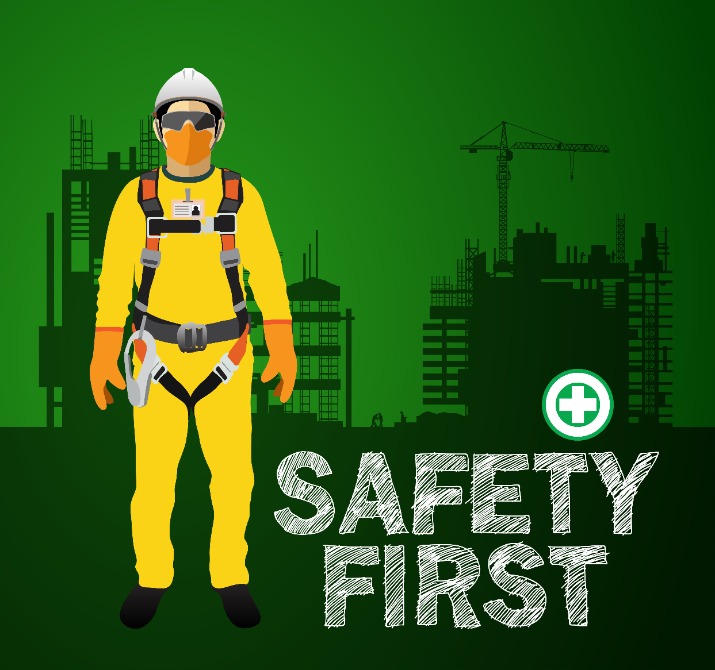
Safety is our number one priority, followed closely by quality construction of bridges, box culverts and highway concrete construction. Both of those considerations are considered when we decide a cofferdam is needed for implementation of the design-build plans. Cofferdams provide a safer working environment for our engineers, staff and subcontractors.
Cost is also a factor. While cofferdams can be useful and necessary for specific projects or phases of projects, they do add considerable cost to the project’s budget. When the advantages of cofferdams outweigh the cost, including a dry and safe work environment, they are deemed necessary for the effective completion of the project and will be included in the design-build plans. Engineers avoid underwater construction at all costs but when needed, cofferdams are much safer than other methods, like using divers and hyperbaric (underwater) welding teams.
We take all variables into account. Variable of the environment and design-build plans determine the way the cofferdam is constructed. For example, during the design process, the determination is made if two rings, three rings or more are required depending on the ground conditions, hydrostatic pressure, and traffic and/or construction equipment surcharge loads. The steel ring beams located inside the cofferdam are placed to prevent the sheets from buckling in when the water is removed. Another variable considered is depth of insertion of the sheet piling. How deep the sheet piling is sunk into the ground is determined by the soil type and surrounding water table. Our team of engineers understand that every situation and environment is different, so researching the variables and analyzing all the determining factors is done with precision and care.
We have Experience & Innovation. Cofferdams have come a long way since the days of ancient Rome, as well as the technology and equipment to strategically place the cofferdam’s ring assembly. Our crews are very familiar with the steps in building and disassembling the corrugated sheet piling walls and effectively pumping out the water to the ground as dry as possible. With over 50+ years of experience in the bridge and highway construction industry, we have constructed and deconstructed 100’s of cofferdams, so are very skilled to know when projects require cofferdams, as well as understand the conditions where cofferdams are deemed unnecessary and other more cost-effective methods can be used without comprising safety of our crew and the public. Every situation is different, no two projects are identical, so our engineers have the knowledge and experience to know how to proceed.
PHOTO GALLERY
“On some construction projects where water or space constraints exist, it becomes necessary to build cofferdams. Cofferdams are constructed to create a safe working space free of water and, in some instances, protect adjacent structures from damage. At Haydon Bridge, our cofferdam systems are designed by professional engineers, constructed according to plans and managed according to the safety regulations defined by OSHA to protect our employees and the public.”
Bill Pettus, Safety Director
Below are pictures and narratives of a cofferdam system used on our Pulaski County, KY job in the summer of ’22. This cofferdam was needed to protect an adjacent, active roadway area. Additionally, as we excavated the area, we discovered significant amounts of ground water were present. In this instance, a cofferdam proved to be the perfect solution!

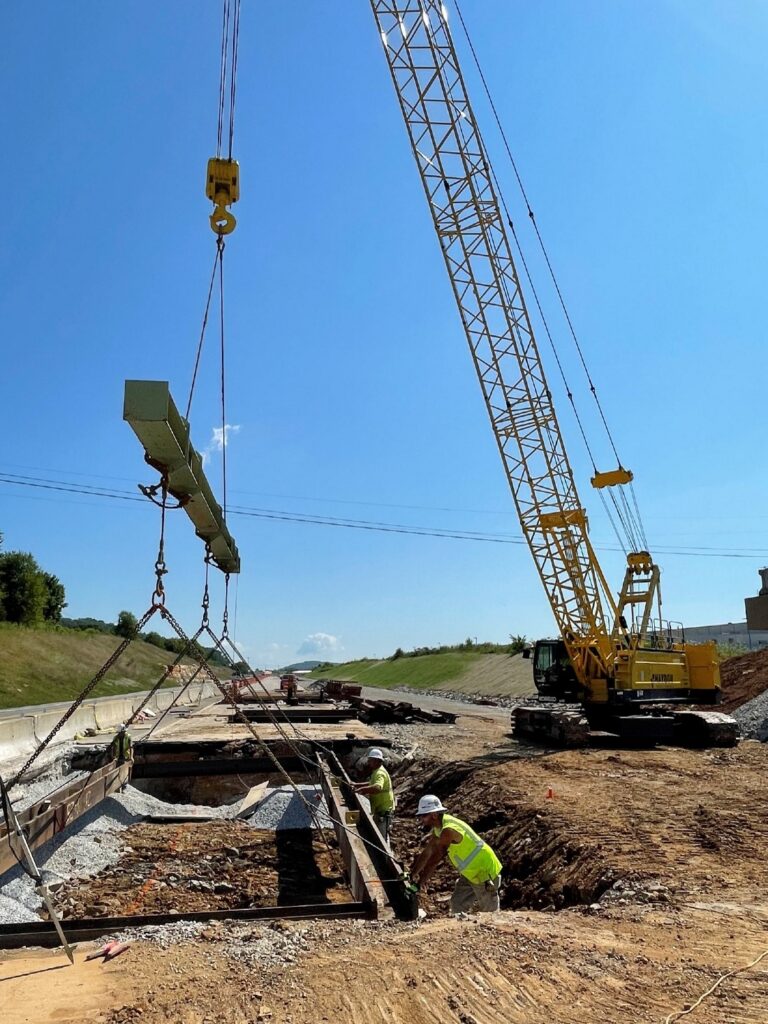
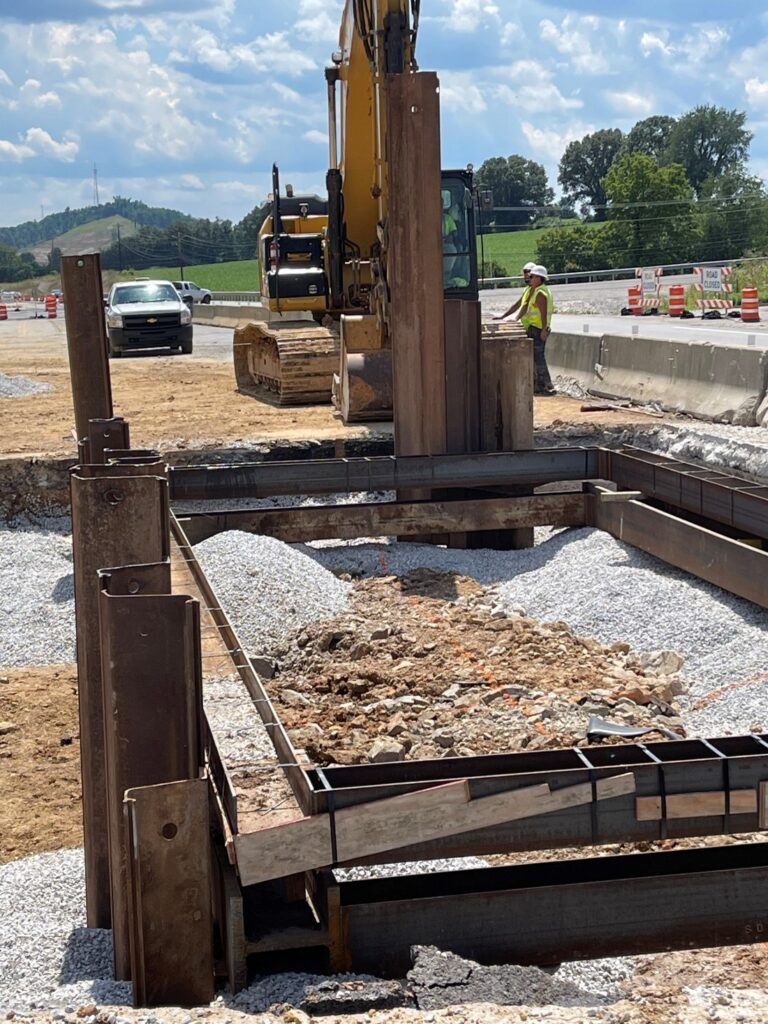
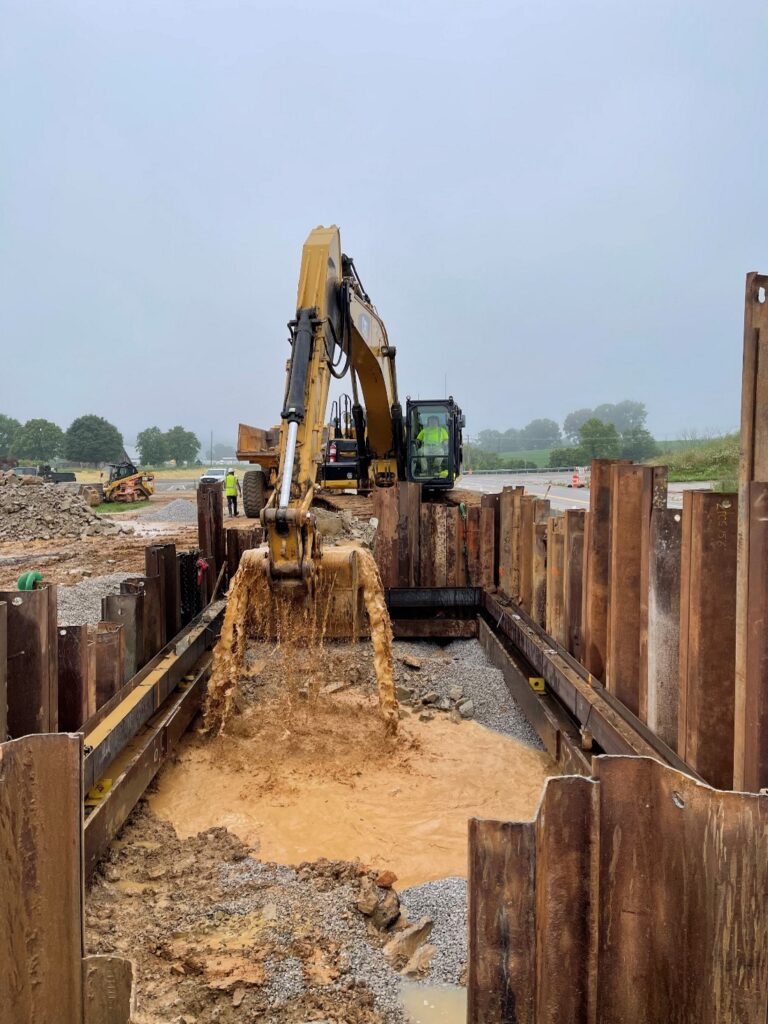
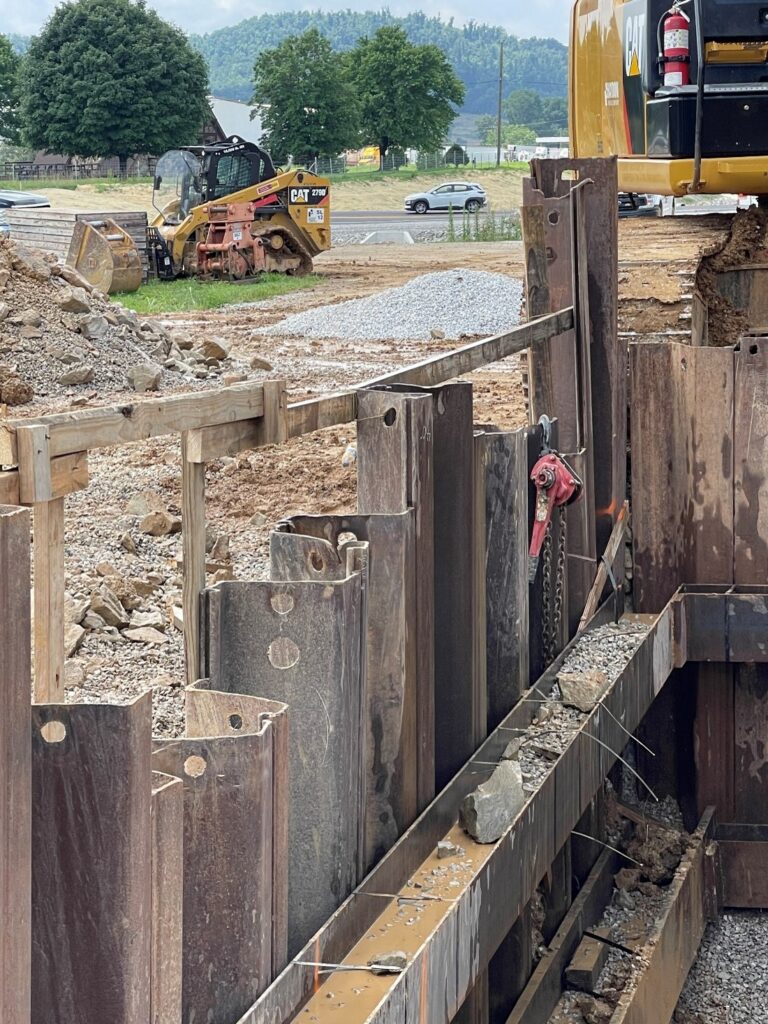
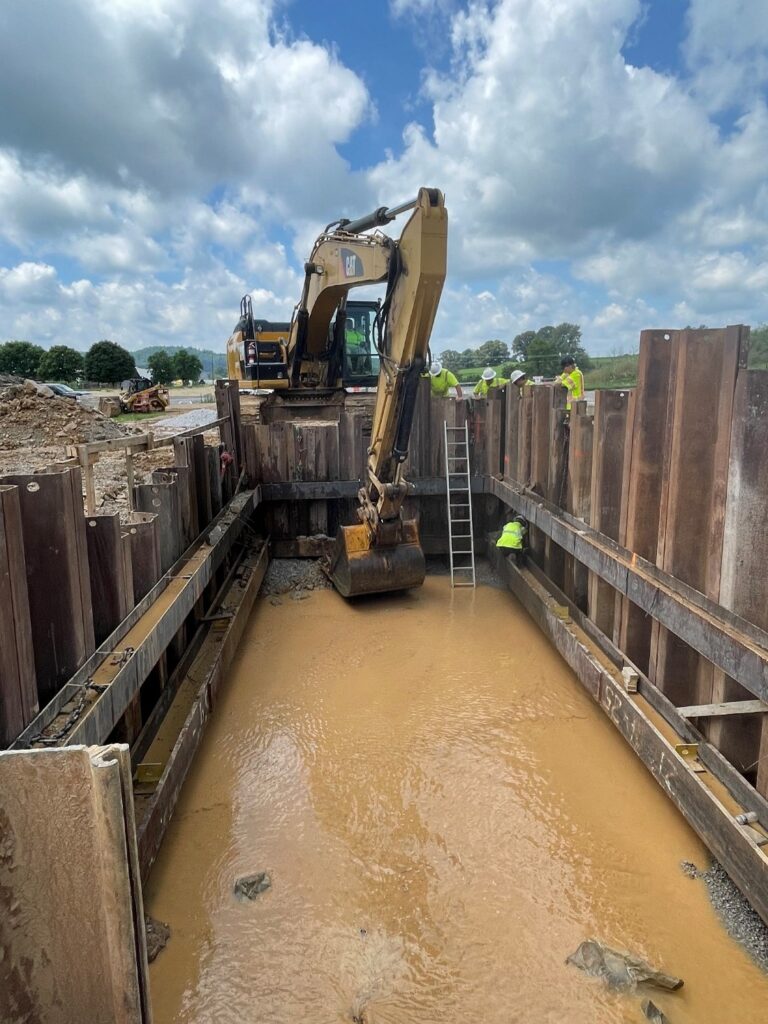
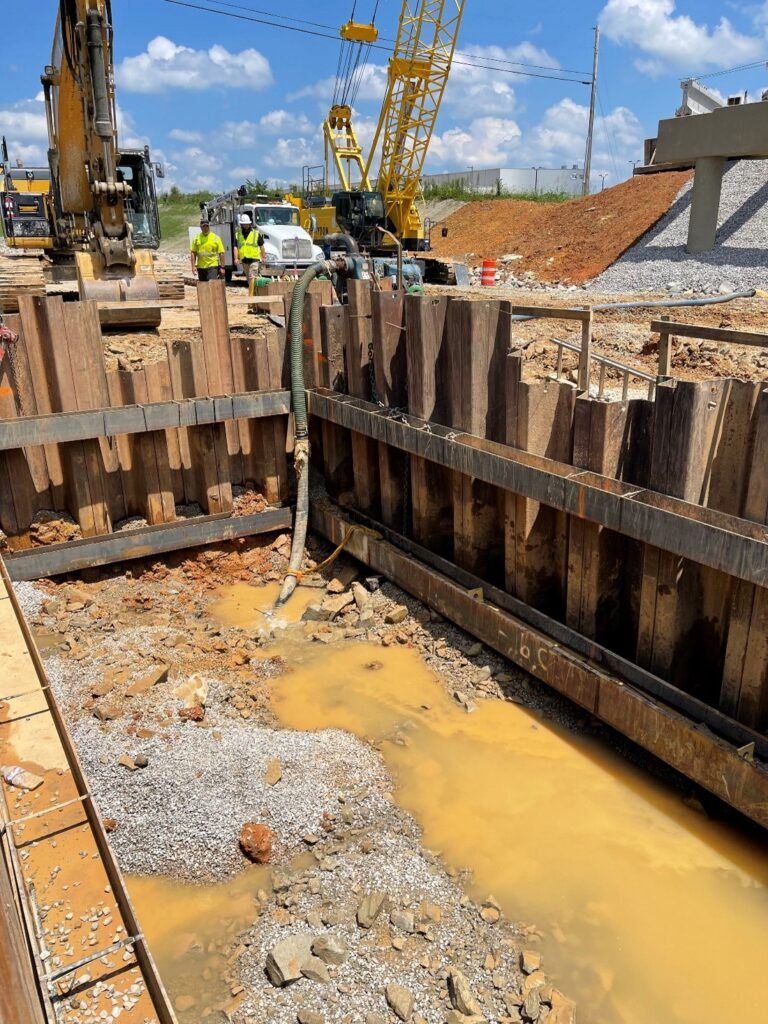
Request a Quote
Our company has a reputation, from day one to over 50 years later of being a highway and bridge construction company that produces quality work with high standards, honesty, integrity and efficiency without cutting corners. We’d love to talk to you about your next project.







